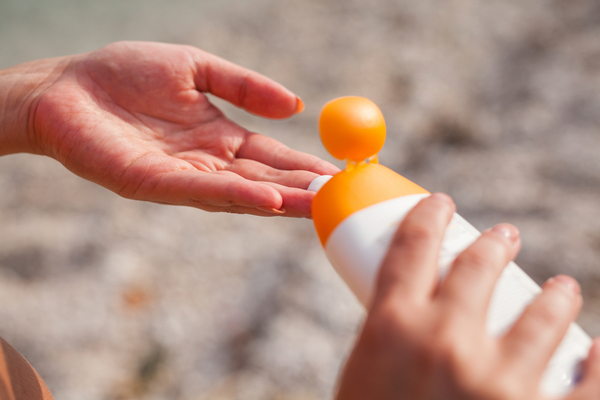Being outside is great for our physical, emotional, and mental health. When you’re heading outdoors, it’s important to take steps to protect your skin from the sun. As Healthline reports, while it might be tempting to skip sun protection when you can’t see the sun through the clouds, the sun’s ultraviolet (UV) radiation is still very powerful. Even though it’s invisible, UV radiation can still harm your skin on cloudy days, causing sunburn and skin damage that increases your risk of skin cancer.
That’s why it’s so important to seek shade often and use sun protection all year long.
Why it’s Possible to Get Sunburned on a Cloudy Day
The sun’s UV radiation is a type of natural energy source we can’t see. But we can feel the sun’s UV energy. This is why unprotected skin feels hot or warm during daylight hours when the sun is out. The sun’s UV radiation is strongest and most damaging between 10 a.m. and 4 p.m. daylight saving time (9 a.m. to 3 p.m. standard time) when the Earth is most fully exposed to the sun. UV radiation grows even more powerful and potentially damaging during the summer, as the Earth tilts on an angle toward the sun (during the winter it tilts away). If you live near the equator, the sun’s UV radiation is strong all year round because this part of the Earth sticks out closest to the sun. People living, working, or recreating at high altitudes also experience strong sun exposure for similar reasons. The sun’s UV radiation can be strengthened and do more damage when it hits reflective surfaces like water, cement, sand, and snow.
Therefore, it’s especially important to ensure you have adequate sun protection when you’re in places or situations where you’ll encounter these sun-magnifying factors, such as when:
- swimming
- at the beach
- walking down a cement sidewalk
- shoveling or playing in snow
Who is Most At Risk for Getting Sunburned?
- have lighter skin or eyes
- have been sunburned in the past
- are taking medications that can increase sun sensitivity, such as antibiotics and birth control pills
- use certain skin care products known to increase sunburn risk, like retinoids and benzoyl peroxide
Symptoms of a Sunburn
Symptoms of a sunburn may present differently based on your skin color and the severity of the sunburn. A sunburn usually presents its most intense symptoms 24 to 36 hours after sun exposure. It typically heals within a few days to a week. Some of the most common symptoms of a mild to moderate sunburn include:
- blisters
- confusion, weakness, or faintness
- chills
- dry, itchy, or peeling skin
- fever
- pain
- swelling
People with lighter skin tones almost always experience severe redness along with a sunburn
How to Protect Your Skin on a Cloudy Day
It’s most beneficial to use multiple types of sun protection. There’s not one type that does it all. On both sunny and cloudy days, try to take as many of the following sun-protection steps as possible:
- Cover up your skin with clothing, and look for “ultraviolet protection factor” labels on the clothing you buy.
- Wear sunglasses. UV exposure also increases the risk of serious eye diseases over time.
- Apply broad-spectrum sunscreen (which blocks both UVA and UVB rays) with an SPF of at least 30 (and 50 for skin that burns more easily). Apply generously and reapply as directed on the label.
- Spend time in the shade when outdoors, especially on days when there’s a high UV index rating. You can find out the day’s UV index on most weather channels, apps, and websites.
- Wear a wide-brimmed hat, or a cap with a brim that covers your face.
- Try to head outdoors when the sun is at its weakest, in the early morning and evening.
Sunburns may be temporary, but the skin damage they cause is permanent.
What kind of sunscreen should you apply on a cloudy day?
Apply the same sunscreen you’d use on a sunny day on cloudy days; that is, broad-spectrum sunscreens with SPF of at least 30. Note that naturally derived “reef-safe” sunscreens are also better for our bodies and nature, as they do not contain the toxic chemicals oxybenzone and octinoxate. Cover all your bare skin with sunscreen, including your hands, ears, and neck. Waterproof sunscreens are preferable for people who are physically active or may spend time in or near water.
How much sunscreen should you apply on a cloudy day?
It’s recommended that adults apply about 1 ounce of sunscreen per application to fully cover their body. That’s about as much sunscreen as would fit inside a shot glass. Make sure you rub the sunscreen fully into your skin. It takes about 15 minutes for sunscreen to be absorbed into your skin, so it’s best to apply before you head outdoors. Reapply your sunscreen every 2 hours that you’re in the sun.
—
Photo Credit: Jakub Zak / Shutterstock.com
